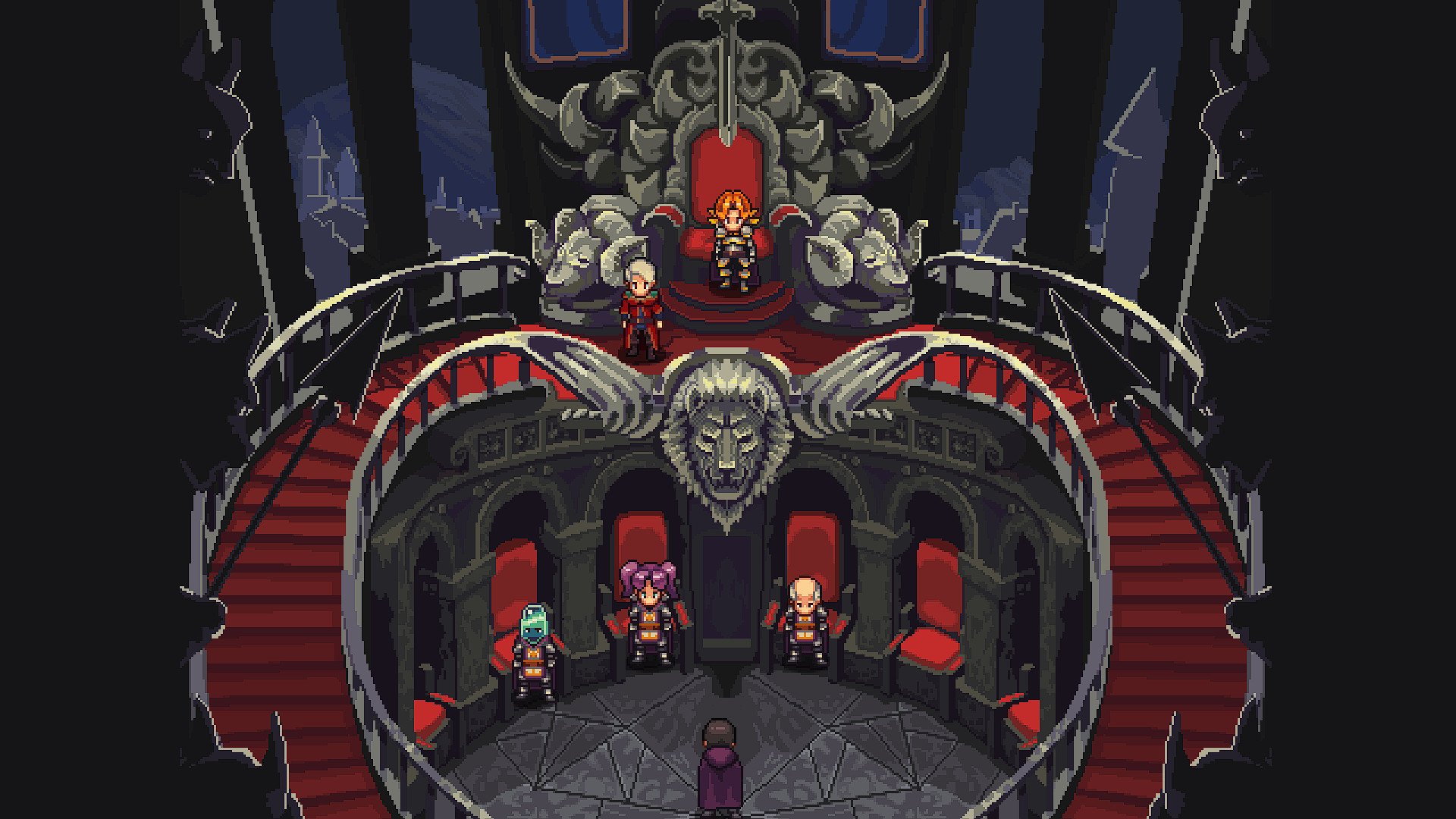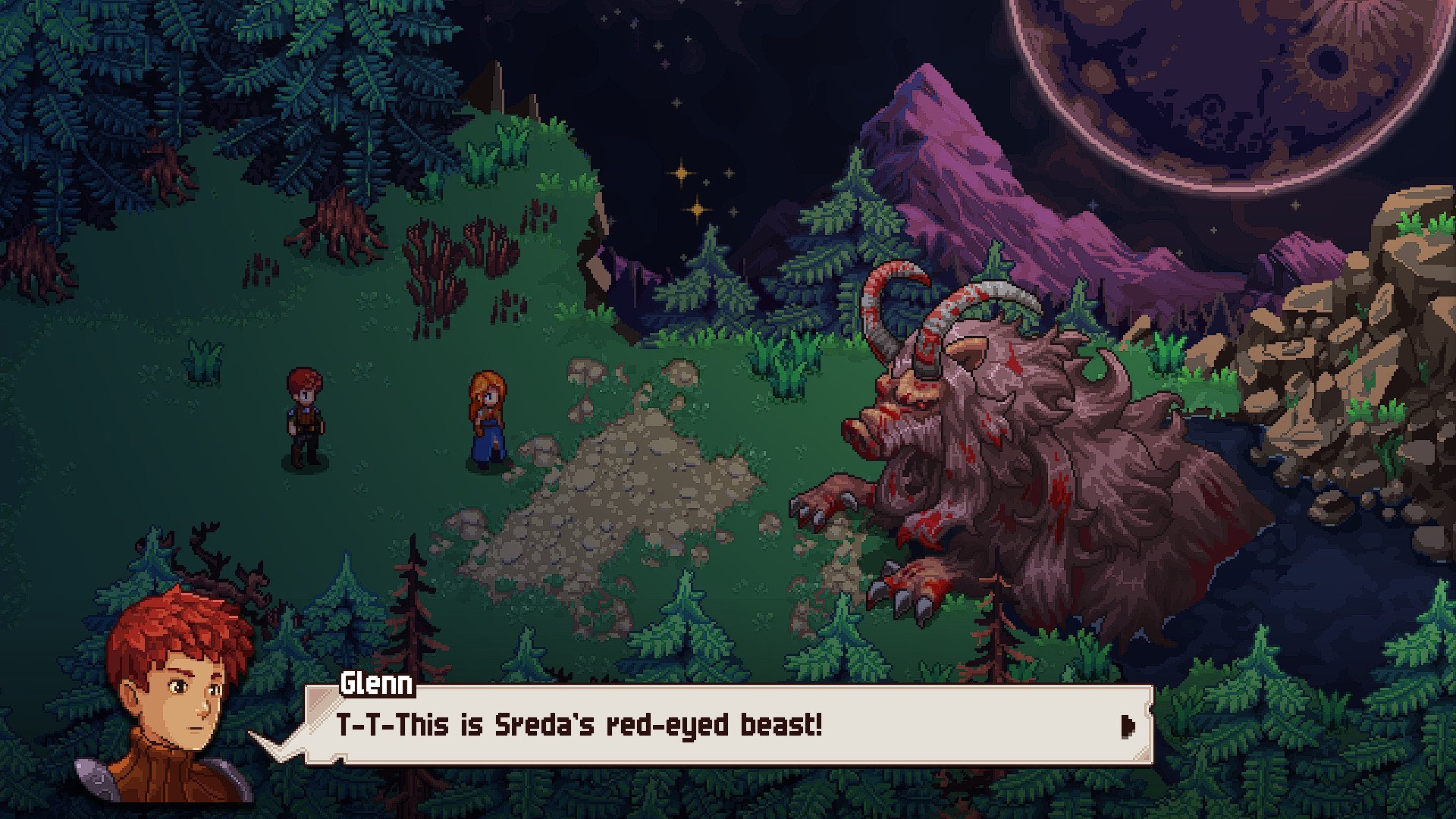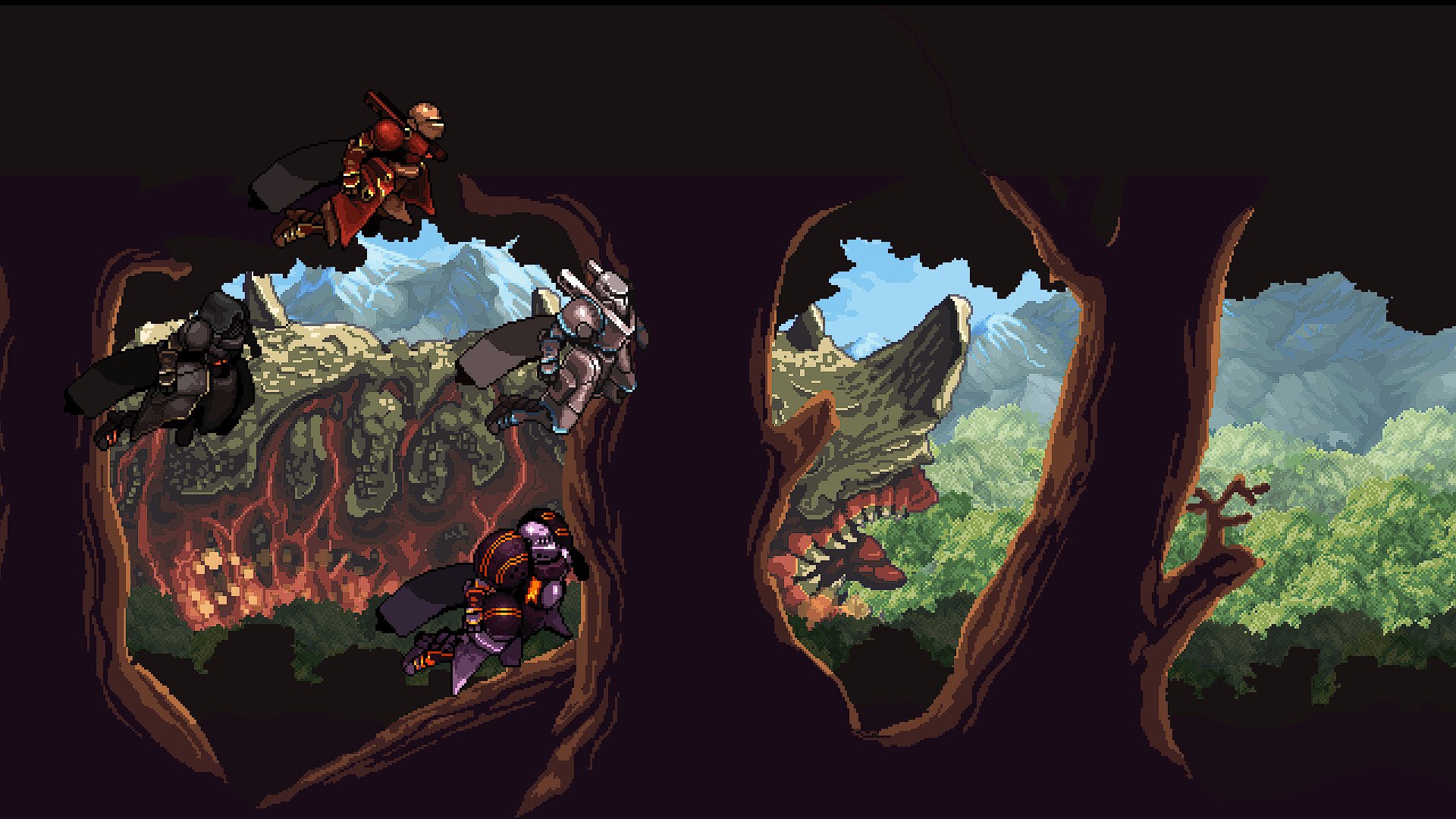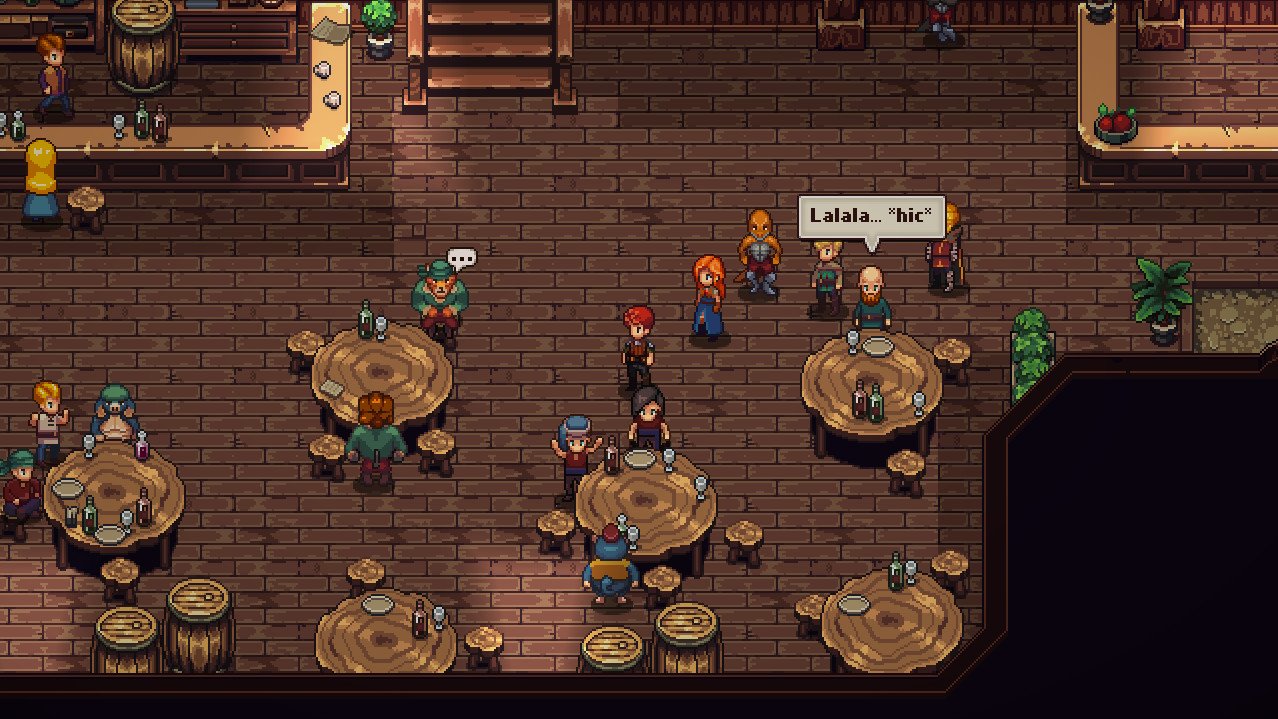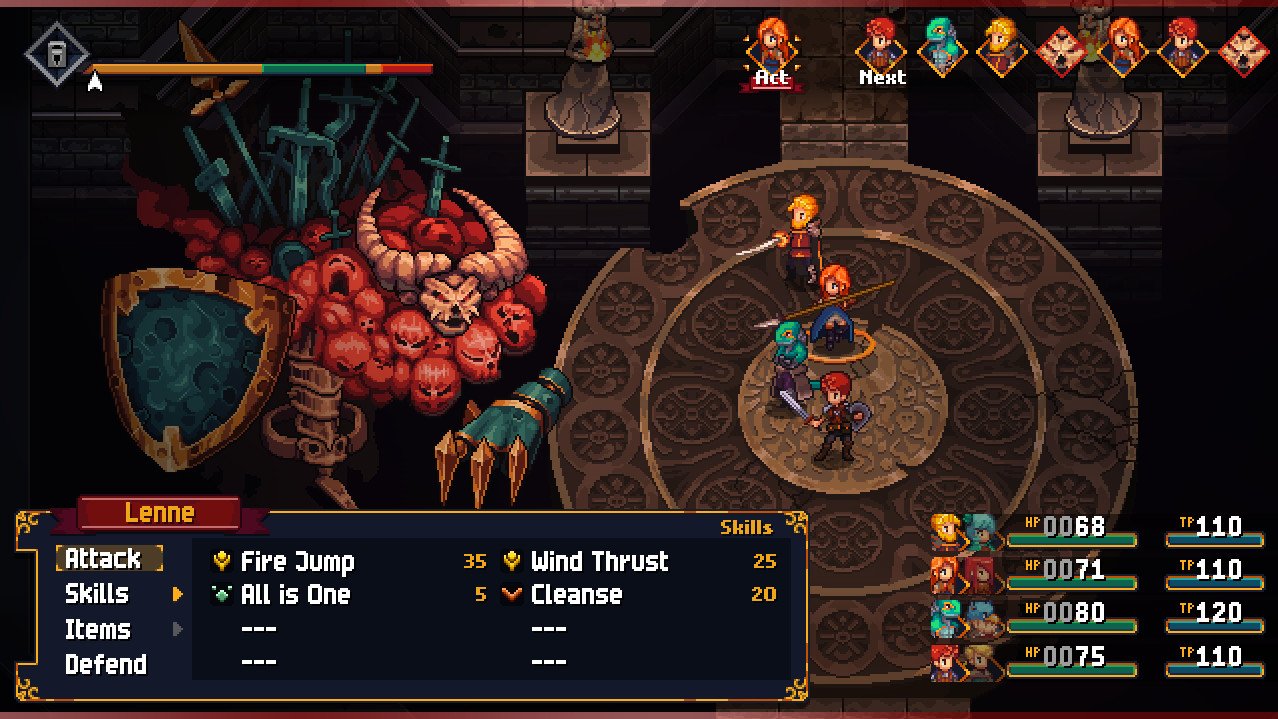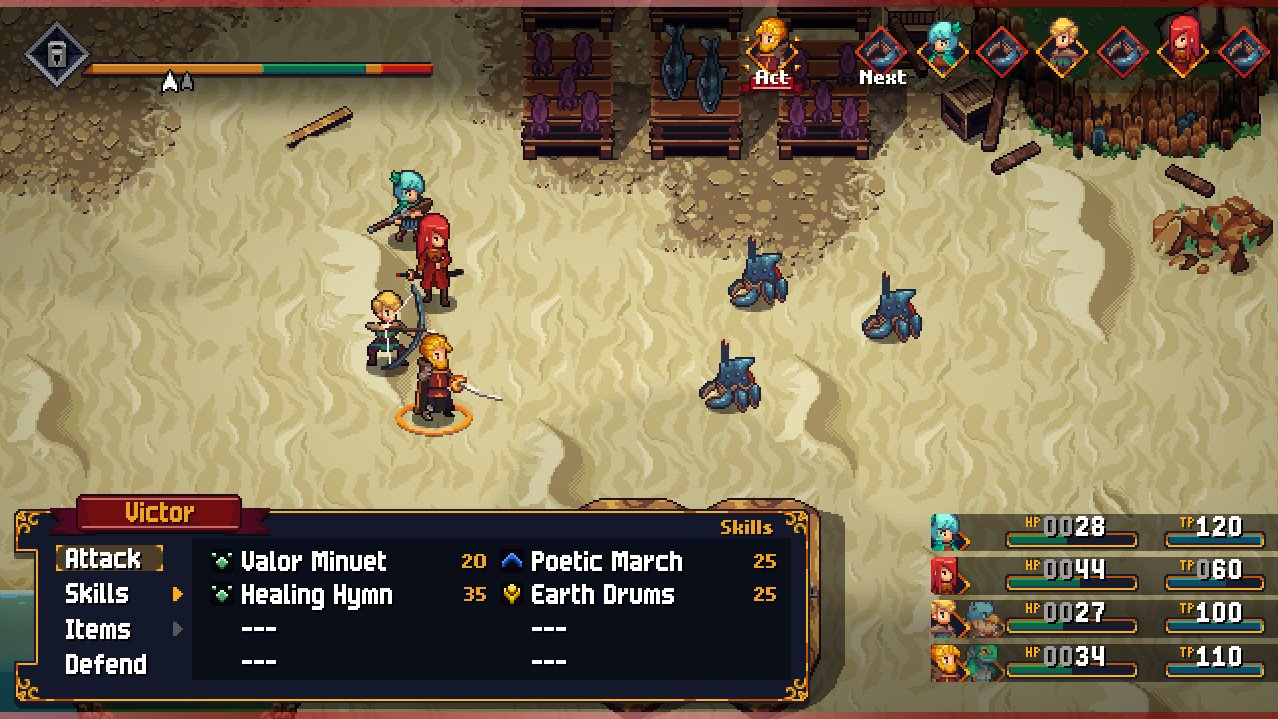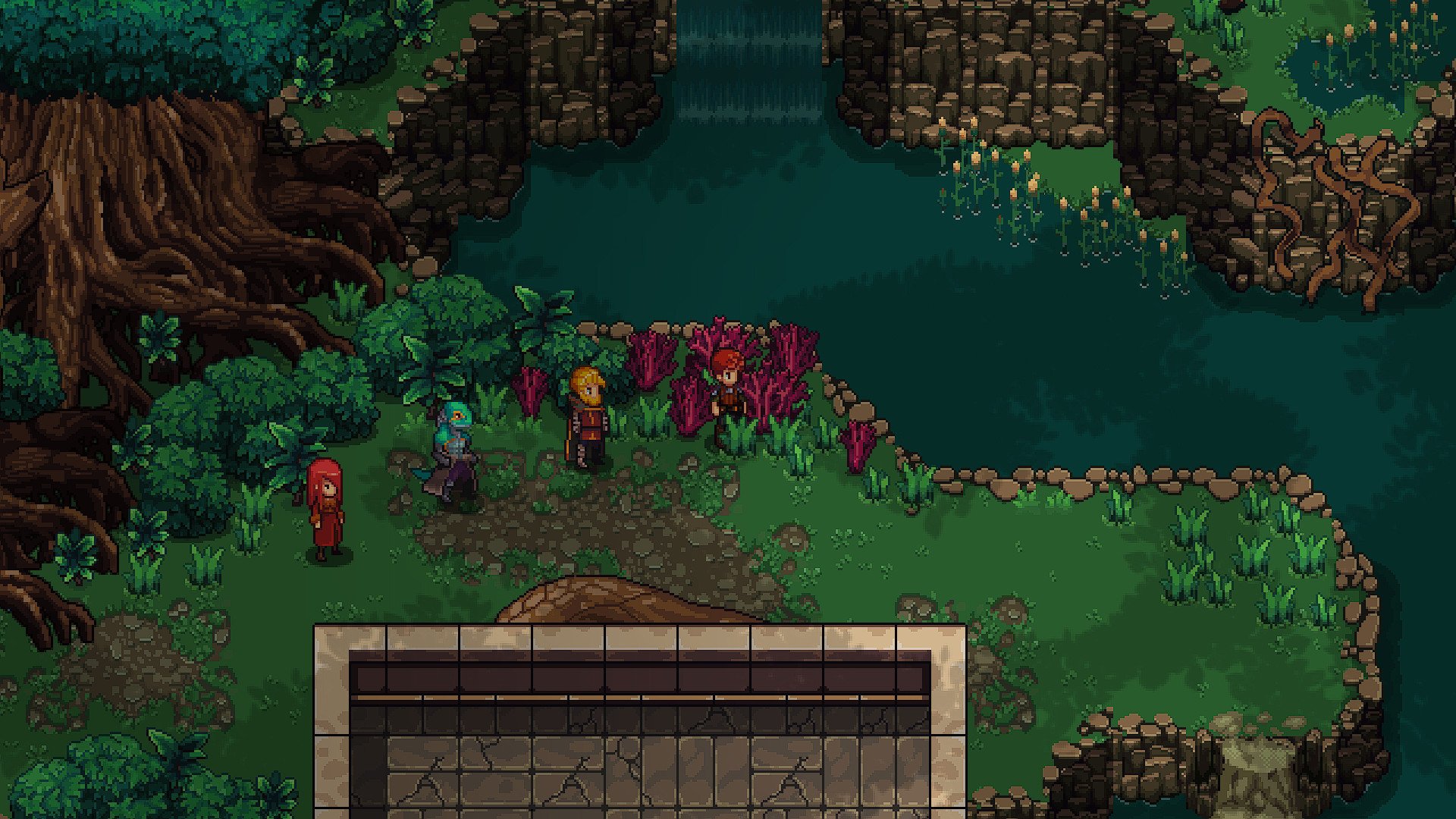Reviving The 16-Bit JRPG: Chained Echoes [Review]
By: Mithrandiel
“I should state this very clearly: Chained Echoes isn't a retro game. At least not for me. I wrote a love letter in the form of a video game to the golden era of JRPGs on the SNES and PSX, yes. But I didn't create a retro game. [I created] a game which looks and feels how I remember titles such as Final Fantasy VI, Xenogears, Terrangima and Suikoden 2.” - Matthias Linda, Creator of Chained Echoes
We live in an age of abundance when it comes to video games. From the vast Steam library to countless indie titles across the Playstation and Xbox marketplaces, there are so many games out there! At the same time, whether it’s $5 gems you picked up during the latest Steam sale, or latest $70 AAA title, the Beast of Backlog haunts all of us, and the onslaught of new releases can make it hard to find honest-to-goodness treasures to commit our time to.
That’s why when the opportunity to review Chained Echoes landed in my mailbox, I was almost relieved. It’s like someone walked up to me and slapped me in the face with a game they knew I would love.
After spending quite a bit of time with Chained Echoes over the last week, I can confidently say it captures the look and feel of a 16-bit era JRPG better than most I’ve seen and played, and with the innovative Overdrive system, I’m sure gamers everywhere are going to fall in love with this game.
I had a chance to reach out to creator Matthias Linda to get some questions answered as well, so look forward to his insights throughout the review.
Story/World
Chained Echoes introduces the narrative with one of the main characters, Glenn, on an apparently high-stakes mission to destroy a magical crystal called The Opus Stone. In short order we are introduced to a handful of other characters, including a mercenary leader, a Shakespeare-like writer, a cunning thief, an undercover princess and her loyal guard. Each of these heroes’ narrative threads smartly interweave with one another with an impressive pacing that is neither so fast that we can’t appreciate the individual story arcs, nor slow to the point where the player begin to lose interest.
After the opening chapter, we get a better idea for the broader conflict, including three factions vying for control of the continent. While the core narrative may sound familiar, the story soon branches out into areas interesting and engaging, encouraging players to explore the various characters backstories, and engrossing them in the broader lore of the world of Chained Echoes.
Clocking in at about 30-35 hours (though achievement addicts and completionists can easily sink 60-80+), I was impressed at the pacing of Chained Echoes throughout my time with the game. Key lore and revelations are dropped in proper intervals, without feeling like the world is getting too big too fast, but there are also elements of the world that remain unexplored to allow your mind to fill in the gaps.
Visuals/Sound
Indeed, the world of Chained Echoes is impressively large for a solo developer. Particularly in the towns is where I noticed they seemed to go on for quite a while. “I planned them as towns….” Matthias said. “I wanted players to feel like they are actually exploring some form of a medieval city, like I imagined them. To be honest, I might be a bit insane, I had no idea how much work it'd be to fill them with life. I got told it is a common problem among indies to start planning out things too big. Well. I fell for the trap, that's for sure.”
Personally, I’m glad he fell for the trap, as there is indeed plenty of bustling life within the towns of Chained Echoes, reminiscent of the rich sprites and colorful towns in the JRPGs of yesteryear.
Environments share the same lushness and attention, and indeed there are segments when the pixel art appears to leap off of the screen. When asked about his inspiration for this approach to the aesthetic of Chained Echoes, Matthias said “The answers are the same. Chrono Trigger, Xenogears, Final Fantasy, Suikoden, Legend of Dragoon, Breath of Fire. But it is important to state again: I did not try to copy things. I tried to remember things. And the look of Chained Echoes is basically how I remember how these games looked like - although I know they didn't look like that.”
I would say that this approach of trying to remember and re-create how these games looked has been impactful. In a way I certainly see and feel a lot more of that Chrono Trigger and Xenogears vibe in this game than I have in any other in the last few years.
Playing no small part in this is Eddie Marianukroh’s superb soundtrack. From the sweeping title track to festival-themed town anthems, captivating combat tunes and somber dramatic pieces, it runs the gamut of emotion and invokes the spirit of the games that Matthias worked so re-create. He’s a huge fan of the soundtrack as well: “Even if you know that this type of game ain't for you, listen to the soundtrack from Eddie. It is one of the best soundtracks I've ever heard.”
Gameplay/Combat
While there is a lot to be said about a JRPG with a killer story, any game worth a reasonable time commitment has got to have a strong core combat mechanic. Indeed, Chained Echoes could have leaned on the classic “Fight/Magic/Items” structure and turn based combat and called it a day, and this still would have been a fantastic game.
Thankfully for us, Matthias had something a little different in mind: The Overdrive System.
Simply put, as each character executes an action such as an attack or skill, the overdrive meter in the upper left corner is impacted. Much of the time it will increase as a result of these actions, moving from a yellow area, to a green area, and finally a red area.
The green zone is known as being in “Overdrive”. Keeping your party in this region is beneficial, as it reduces the tech points needed to execute skills by half, as well as increasing damage.
Go to far, however, and you’ll “Overheat” - this will result in your characters taking increased damage, and you may have to defend or do otherwise less-than-optimal skills to get back into the Overdrive zone.
When you are first introduced to the system, it’s deceivingly simple to maintain peak performance. In fact, the game does a great job of lulling you into a false sense of security that abusing the Overdrive system is, in fact, easy.
Readers, I will assure you now: it is not.
The realization may be stark and sudden, or slow and painful, but you will discover this all the same…and it will only increase your appreciation for this succulent combat system.
I had to pick Matthias’ brain on this one, mainly on the methodology behind its inception, as well as any key learns in creating it. “The key learning was probably that I had to rebalance everything all the time every now and then. While it is innovative for sure... well, at least I hope so... it was quite some pain to get things right. Anyways. I didn't really have a methodology. I had an idea in mind and I tried to break it down to the core. You know, I wanted to have something which feels tactical and yet fast paced. I really love slow turn based combat moments. But many people don't. And I do understand why. It takes the away the flow. I wanted to keep the flow up. According to the feedback so far I achieved my mission.”
Similar to games like Chrono Trigger, encounters aren’t random either. You have an opportunity to see enemies in advance, and getting close enough to them will trigger combat. I will say the “hitboxes” on these enemies is sometimes very large, so don’t expect to have to get right up next to them for combat to begin.
In another departure from standard JRPGs, Chained Echoes doesn’t feature a standard XP/leveling system. Instead, players earn Grimoire Shards from milestone battles, which they can then use to purchase key skill upgrades that vary based on character. You may opt to get a +2 attack bonus for one of your brawlers. This will also give them HP and TP increases, among other things, but you are still controlling the direction that your characters are headed.
In addition to this, every battle awards some amount of Skill Points, or SP. These points help to enhance characters currently set passive abilities, which may increase elemental resistance, or otherwise trigger positive effects following an attack.
In lieu of the standard XP grind, there is also an interactive Reward Board by region. Completing various tasks will contribute to an ongoing “chain”, and there are rewards to redeem both in the completion of these various tasks, as well as for continuing to extend your reward chain.
Did I mention there’s a robust blacksmithing system? And gems you can craft? And Class emblems you can earn to unlock new skills and assign to characters at whim? What about the characters’ individual Ultra Moves?
Suffice it to say that there is a lot happening in the realm of gameplay in Chained Echoes, but at its core it is a game that is deeply committed to maintaining that balance “between tactical and fast paced”, as Matthias put it.
Closing Thoughts
Whenever I’m reviewing indie games, I always remember the immortal words of Hyper Light Drifter’s Alx Preston: “Video games are fuckin’ crazy to make.” Playing through Chained Echoes I couldn’t help but reflect on just how much work must have gone into creating the game. Indeed I asked Matthias if there was anything particularly “simple” that ended up being more complicated than he expected: “Getting everything together, working. It is nice to plan out everything on paper. It is cool to design features, create characters, levels and all that. But it is a totally different thing to mix everything together for the very first time to notice that everything is falling apart everywhere at once. The earlier you do that during development, the easier the following months and years will be, that's for sure now.”
While creating video games can be a frantic, hectic, messy process, I’m delighted that Matthias put the work in to create Chained Echoes. It’s a game that overflows with adoration and respect for the golden era of 16-bit gaming, while not being afraid to tweak and adjust systems to maintain player engagement and interest. It’s a game that effectively transports players to a different time, with an aesthetic and soundscape that is as faithful to the period as Sabotage Studio’s The Messenger.
Plainly speaking - the game is fantastic. JRPG fans owe it to themselves to check out this game. You will not be disappointed.
Score - 9/10
Full Interview With Matthias Linda:
One of the first things we noticed was that many of the towns seem very expansive, which we love! What were some of your considerations specifically when designing towns and villages within Chained Echoes?
I planned them as towns. I wanted players to feel like they are actually exploring some form of a medieval city, like I imagined them. To be honest, I might be a bit insane, I had no idea how much work it'd be to fill them with life. I got told it is a common problem among indies to start planning out things too big. Well. I fell for the trap, that's for sure.
Doing all of this work as a solo developer must have been very challenging. Who were some people that you would run ideas by or do "alpha testing" of the game when you weren't sure if it was the right direction to go?
I worked closely with the folks from Deck13 in first place. They tested out everything in the beginning and they still are. At some point we finally could also involve the Kickstarter Backers. But yeah, it is super important to get feedback as early as possible to adjust things early on.
What was an element of the game that you thought would be relatively easy, but turned out to be much more complicated than you thought?
Getting everything together, working. It is nice to plan out everything on paper. It is cool to design features, create characters, levels and all that. But it is a totally different thing to mix everything together for the very first time to notice that everything is falling apart everywhere at once. The earlier you do that during development, the easier the following months and years will be, that's for sure now.
The video game market is inundated with retro games and throwback titles - are there any in particular that you feel executed the genre properly? As a follow up - what were some things that you considered in an effort to make sure you were able to deliver on your version of a "love letter" to this era of JRPGs?
I should state this very clearly: Chained Echoes isn't a retro game. At least not for me. I wrote a love letter in form of a videogame to the golden era of JRPGs on the SNES and PSX, yes. But I didn't create a retro game but a game which looks and feels how I remember titles such as Final Fantasy VI, Xenogears, Terrangima and Suikoden 2. I always wanted to create something worth of these games. I grew up on them. And one day I was finally able to actually follow my dream to make it come true. But yeah, retro games for me are games which copy what was great once. But I tried to copy what was still in my memory. And you remember things differently. I wanted to create that exact feeling I had when playing these games as a child.
In a previous interview you had with Rock Paper Shotgun, you indicated that Xenogears really stood out as a key RPG from your youth. It is also one of my favorites of all time, so you have very good taste (haha!) I am curious, what was it about Xenogears specifically that you really enjoyed, and what elements of that game have you tried to bring into Chained Echoes?
The mix of 2D and 3D was definitely something I loved. But first and foremost the mechs, obviously. Oh god. The music. The music! Tons of mechanics and characters are inspired by the game so I assume you will notice. Sorry, Not gonna spoil too much here.
The Overdrive System is an incredibly innovative combat mechanic. Two questions - what was your general methodology in creating this combat system, and what were some key learns that you had while refining it?
The key learning was probably that I had to rebalance everything all the time every now and then. While it is innovative for sure... well, at least I hope so... it was quite some pain to get things right. Anyways. I didn't really have a methodology. I had an idea in mind and I tried to break it down to the core. You know, I wanted to have something which feels tactical and yet fast paced. I really love slow turn based combat moments. But many people don't. And I do understand why. It takes the away the flow. I wanted to keep the flow up. According to the feedback so far I achieved my mission.
The pixel art in Chained Echoes is fantastic. It has a vibrancy and detail that really re-creates that SNES period. While I definitely see some Chrono Trigger in there, what were some other key titles that influenced the way you wanted Chained Echoes to look and feel like?
The answers are the same. Chrono Trigger, Xenogears, Final Fantasy, Suikoden, Legend of Dragoon, Breath of Fire. But it is important to state again: I did not try to copy things. I tried to remember things. And the look of Chained Echoes is basically how I remember how these games looked like - although I know they didn't look like that.
What does a "successful launch" of this game look like to you? What are you hoping gamers will get out of the experience of playing Chained Echoes?
If people enjoy the game, that'd be a success. I haven't really had the time to think about what success means to me. Too busy with fixing last minute stuff, updating the builds every minute right now. Get back to me once the first two weeks are done and I'll happily let you know if I am happy. I guess. Hm. Thinking about it. Well. Not sure what good sales numbers would be, but looking at the Wishlist I can't complain.
Any final comments?
Even if you know that this type of game ain't for you, listen to the soundtrack from Eddie. It is one of the best soundtracks I've ever heard.


